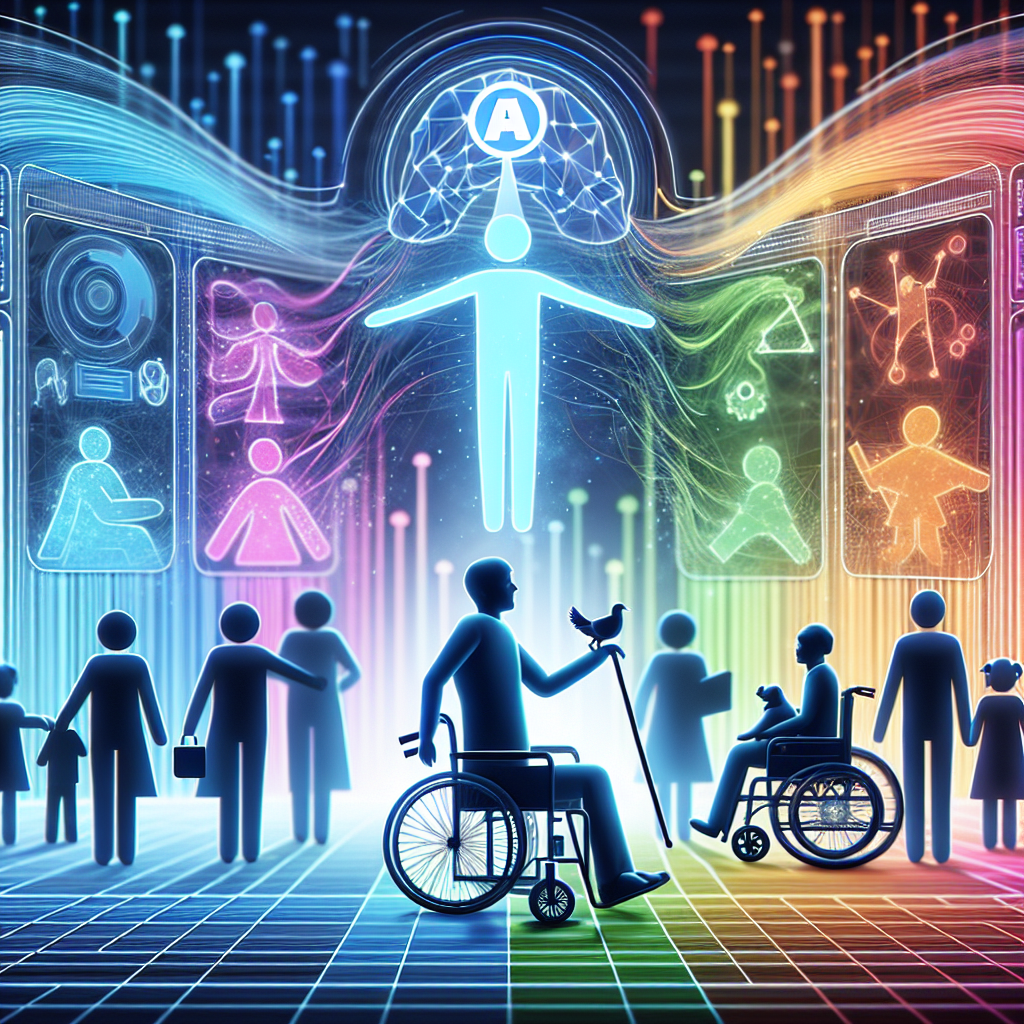The Impact of AI on Government Accessibility and Inclusivity for Persons with Disabilities
In recent years, artificial intelligence (AI) has been making significant strides in various industries, including government services. AI has the potential to revolutionize the way governments interact with citizens, particularly those with disabilities, by improving accessibility and inclusivity. This article will explore the impact of AI on government accessibility and inclusivity for persons with disabilities and discuss the benefits and challenges associated with the adoption of AI in this context.
Benefits of AI for Government Accessibility and Inclusivity
1. Personalized Services: AI can analyze data to understand the unique needs and preferences of persons with disabilities, allowing governments to provide personalized services tailored to their individual requirements. For example, AI can help in creating accessible websites and mobile applications that are user-friendly for individuals with visual impairments or other disabilities.
2. Improved Communication: AI-powered chatbots and virtual assistants can enhance communication between government agencies and persons with disabilities. These tools can provide real-time support and information, making it easier for individuals to access government services and resources.
3. Accessibility Compliance: AI can assist government agencies in ensuring that their digital platforms and services are compliant with accessibility standards such as the Americans with Disabilities Act (ADA). By using AI tools to detect and address accessibility issues, governments can make their services more inclusive for persons with disabilities.
4. Enhanced Decision-Making: AI can help governments make more informed decisions regarding accessibility and inclusivity initiatives. By analyzing data and trends, AI can identify areas where improvements are needed and suggest strategies for enhancing accessibility for persons with disabilities.
5. Cost-Efficiency: AI can streamline processes and reduce costs associated with providing accessible services to persons with disabilities. For example, AI-powered tools can automate tasks such as captioning videos or transcribing audio content, saving time and resources for government agencies.
Challenges of AI for Government Accessibility and Inclusivity
1. Data Privacy: AI relies on vast amounts of data to operate effectively, raising concerns about the privacy and security of sensitive information, particularly for persons with disabilities. Governments must implement robust data protection measures to safeguard the privacy rights of individuals.
2. Bias and Discrimination: AI algorithms can unintentionally perpetuate bias and discrimination, leading to unequal access to government services for persons with disabilities. It is essential for governments to address algorithmic bias and ensure that AI systems are designed and implemented in a fair and inclusive manner.
3. Technical Barriers: Persons with disabilities may face technical barriers when accessing AI-powered government services, such as compatibility issues with assistive technologies or lack of training on how to use AI tools. Governments must provide adequate support and training to ensure that individuals with disabilities can fully benefit from AI technologies.
4. Digital Divide: The digital divide, which refers to the gap between individuals who have access to digital technologies and those who do not, can hinder the inclusivity of AI-powered government services for persons with disabilities. Governments must address disparities in digital access and literacy to ensure that everyone can benefit from AI advancements.
5. Ethical Considerations: AI raises ethical considerations related to transparency, accountability, and fairness in decision-making processes. Governments must adhere to ethical standards and guidelines when implementing AI technologies to ensure that they uphold the rights and dignity of persons with disabilities.
FAQs
Q: How can AI improve accessibility for persons with disabilities in government services?
A: AI can improve accessibility by providing personalized services, enhancing communication, ensuring accessibility compliance, supporting decision-making, and reducing costs for government agencies.
Q: What are the challenges of AI for government accessibility and inclusivity?
A: Challenges include data privacy concerns, bias and discrimination in AI algorithms, technical barriers for persons with disabilities, the digital divide, and ethical considerations related to AI implementation.
Q: How can governments address the challenges of AI for accessibility and inclusivity?
A: Governments can address challenges by implementing robust data protection measures, addressing algorithmic bias, providing support and training for individuals with disabilities, bridging the digital divide, and adhering to ethical standards in AI deployment.
In conclusion, AI has the potential to transform government accessibility and inclusivity for persons with disabilities by providing personalized services, improving communication, ensuring accessibility compliance, supporting decision-making, and reducing costs. However, challenges such as data privacy concerns, bias and discrimination, technical barriers, the digital divide, and ethical considerations must be addressed to maximize the benefits of AI for persons with disabilities. By overcoming these challenges and leveraging the power of AI responsibly, governments can create more inclusive and accessible services for all citizens, regardless of their abilities.

